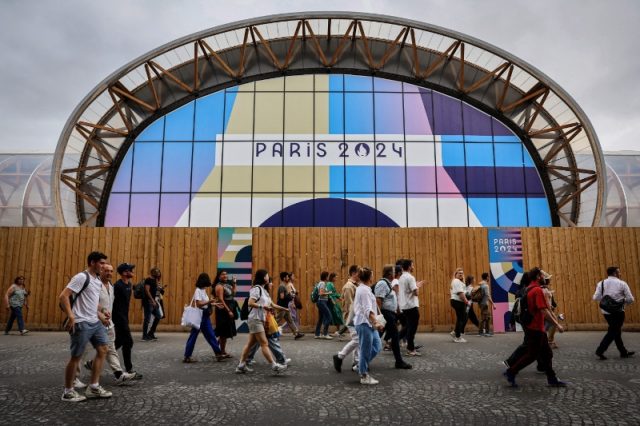
PARIS — The Paris Olympics will see a record number of hours of broadcast production, and ratings across many major territories are on a 12-year high, boosted by the city’s iconic landmarks that are integrated into these Games, the Olympics’ broadcasting chief said on Monday.
From the United States to host France and Australia, broadcasters are enjoying increased ratings across television and digital platforms with the first post-pandemic Olympics.
The Olympics have so far been a runaway hit for NBCUniversal, the Games’ biggest broadcasting partner, which achieved an advertising sales record amid a sharp rise in ratings.
Surveys show that one in four Americans say their work productivity has declined since the Games began, and half say they have rearranged their daily routines in order to watch the action, the Comcast-owned CMCSA.O media company said last week.
For Yiannis Exarchos, CEO of Olympic Broadcasting Services, Paris landmarks such as the Eiffel tower, the Grand Palais and the Champs Elysees that have been integrated into the competition venues have been a major contributing factor.
“You can already tell these Games are a huge success,” Exarchos told Reuters. “France and Paris had a fantastic plan to bring sports back into the city. This vision has been fully embraced by media broadcasters and viewers from around the world.”
“I believe it is a highlight of these Games. This creates a moment which is unique, images that will remain in the collective memory. It is not just any other venue, the whole of Paris has become a stage.”
12-year ratings high
The Games’ opening ceremony along the river Seine attracted 28.6 million U.S. viewers — the most-watched start to a Summer Games since London in 2012 — even though the 2016 Rio de Janeiro Games had a more favorable time zone than Paris for the U.S. audience.
In comparison, the Tokyo Games opening ceremony in 2021 drew 16.7 million viewers, the smallest U.S. television audience for the event in 33 years at the time.
“There is huge media consumption around the world,” Exarchos said in the sprawling international broadcasting center on the outskirts of the city. “This is by far the largest production we have ever done.”
His staff of 8,300 people will be producing more than 11,000 hours of content — nearly 16% up from Tokyo — to feed the growing appetite of broadcasters and digital platforms for the Olympic product.
OBS is using new technologies such as AI, stroboscopic analysis to explain and highlight some of the 32 sports, and cinematic lenses that enhance story-telling.
“It is important that we produce content tailor-made for different types of platforms,” Exarchos said.
The return of fans to the venues after two Games due to COVID-19 further improves these Games’ visual image, he said
“Having spectators back in the heart of the city is a fantastic problem to have,” Exarchos said. “The design of the Games is so incredibly beautiful.”
—Reporting by Karolos GrohmannEditing by Bill Berkrot








